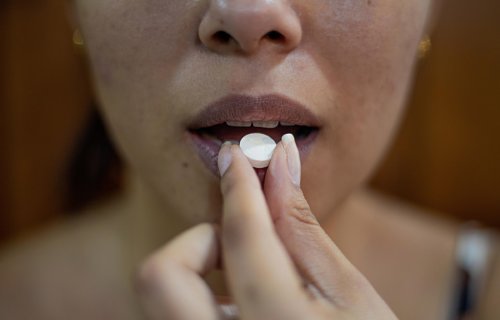
NEW BRUNSWICK, N.J. — A growing number of teens and young adults are overdosing on mental health medications, a new study reveals. Concerningly, a team at Rutgers University found that many of the overdoses are taking place shortly after young patients get a prescription for these drugs from their doctor.
The study found a high number of these overdoses involve a class of drug called benzodiazepine (BZD), which includes medications like Xanax. Other teens and young adults overdosed on psychostimulants like Adderall. All of these drugs are common treatments for mental health issues such as ADHD and anxiety.
While many people who overdose on drugs or prescription medications use substances they shouldn’t be touching, researchers say a significant portion have a legitimate prescription and reason for taking the pills they eventually misuse. With that in mind, the team examined how often people between 15 and 24 years-old overdosed on BZD or stimulants and how many recently received a doctor’s prescription for these medications.
Recent prescriptions are leading to immediate trouble
Between 2016 and 2018, results show 29 percent of the youths who overdosed on BZDs received a written prescription within one month of their overdose. More than four in 10 (42%) received a prescription for BZDs within six months of their overdose. One in four youths overdosing on mental health stimulants received a doctor’s prescription a month before the incident. Nearly four in 10 (39%) had their prescription for less than six months.
Study authors also found that young adults who intentionally overdosed on BZDs and stimulants were more likely to have a recent prescription than those who suffered an accidental overdose.
“Given that a substantial proportion of youth with overdoses involving BZD or stimulants have prescriptions for these drugs in the prior months, physician encounters when these medications are prescribed may offer an opportunity to identify youth at high risk of overdose,” says corresponding author Greta Bushnell, a member of the Center for Pharmacoepidemiology and Treatment Sciences at Rutgers Institute for Health, Health Care Policy and Aging Research (IFH), in a university release.
According to the Centers for Disease Control and Prevention, 4,777 U.S. youths died of a drug overdose in 2019. BZD use accounted to 727 of these overdoses and 902 involved psychostimulants.
“These findings highlight the need for physicians to assess youth for self-injury risk who are prescribed BZDs and stimulants, as well as the need for varying efforts to prevent intentional and unintentional overdoses,” Bushnell adds. “Further, since the potential for harm with BZDs and stimulants increases with other substances such as alcohol, illicit drugs, and opioids, discussions around limiting concurrent substance use is warranted.”
The study is published in the journal Pediatrics.
